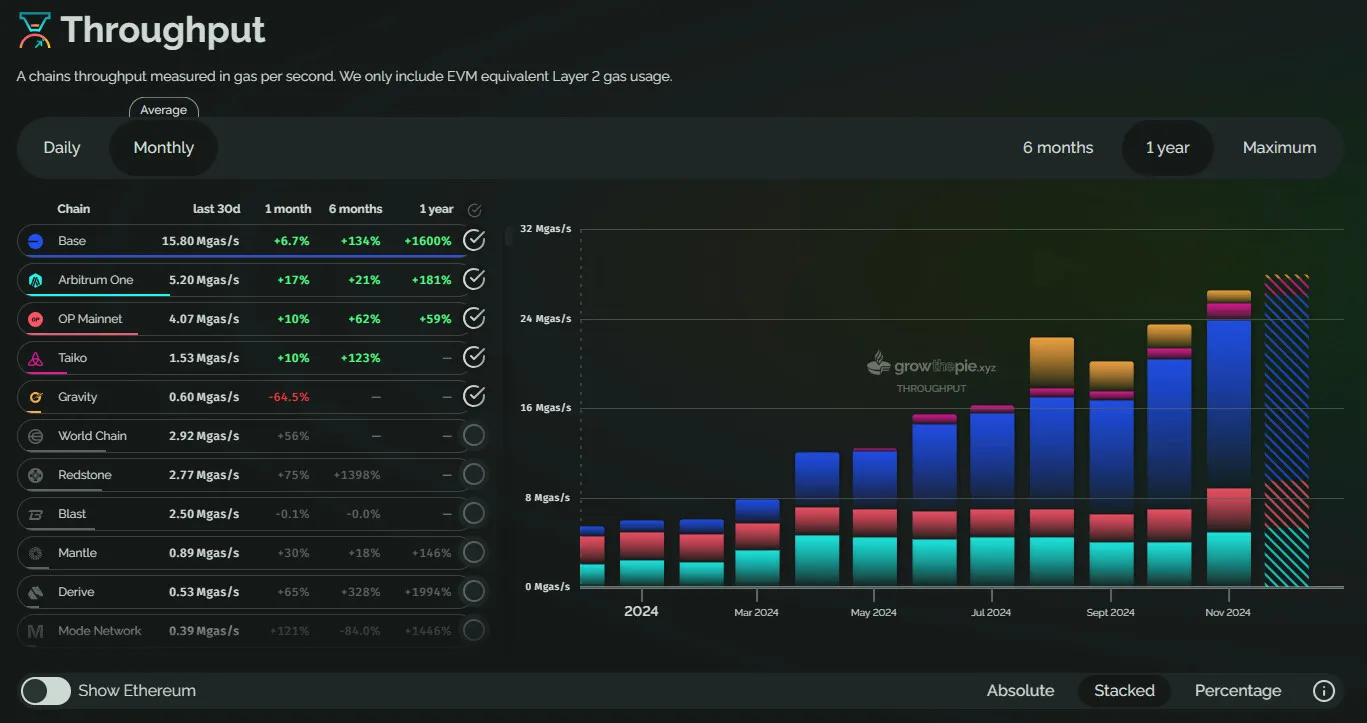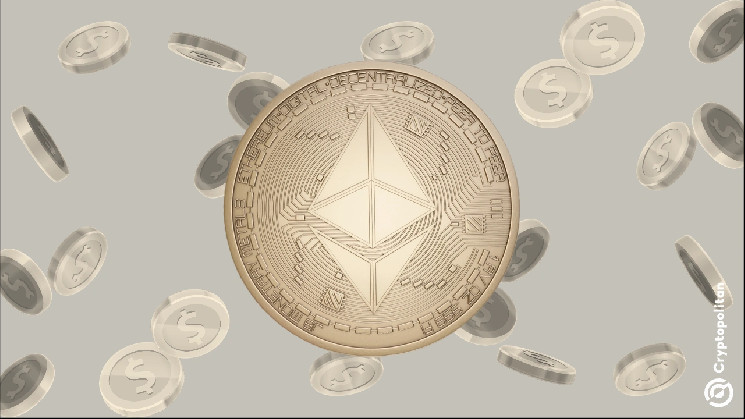On the surface, Ethereum (ETH) looks almost unchanged, with around 500K daily active wallets and daily transactions at a baseline level of around 1.3M. That’s because most of the Ethereum ecosystem’s growth in 2024 came from L2 chains.
Ethereum’s importance in 2024 came from growth “hidden” in L2 chains. The main network carried up to 1.3M daily transactions, with no dramatic spikes in activity. However, Ethereum is as active as ever, only scaled by its busiest L2 chains.

L2 activity on the top 5 networks led to over 400% growth for the Ethereum ecosystem in 2024. By the end of the year, the throughput growth may reach 500%, based on an expansion of both raw transactions and complex token routing.
DEX activity, a revival of NFTs, and stablecoin usage all add to the business of the top L2 chains.
Ethereum serves as the settlement layer, app building goes to L2
For most of the year, ETH remained stagnant, serving as a utility token. However, other metrics showed Ethereum remained indispensable in the crypto space. L1 is still key to all activity, serving as a settlement layer and for added security. However, app building is now well-established in the L2 space.
On the side of Ethereum, the busiest smart contracts reflect demand for on-chain swaps and stablecoin usage. Rarely, an outlier app will line up among the busiest contracts. On the main chain, the Uniswap router and Tether are the two biggest gas burners, consuming around 16% of all gas.
When it comes to transactions at scale, the real activity reflects the growth of L2 chains. Based on the throughput metric, L2s have successfully scaled Ethereum while inviting more usage and handling more transactions.
The most active growth for a single chain comes from Base, the tokenless protocol with the lowest fees. However, Arbitrum and Optimism have also added their apps, and more lately, Taiko and Gravity boosted the total transaction count.
At this stage, it is relatively hard to estimate which transactions are high-quality, and which are carrying low value or are the result of bot activity.
One of the metrics to estimate the value of L2 chains is their capacity to carry stablecoins. Arbitrum is still the leader, as its supply of stablecoins is on an upward trajectory. The chain may soon carry more than 6B stablecoins and is one of the main targets for inflows from Ethereum.
L2 narrative shifted in 2024
The past year saw a shift in the overall attitude to the L2 narrative. In previous periods, any token with a potential L2 chain was capable of generating hype. However, with more than 100 proposed or working L2 chains, the market suffered from over-supply.
The total market cap of L2 tokens toward the end of the year was at $22.4B. Most of the value was concentrated in the top 10 coins and tokens, especially Arbitrum and Optimism. Older legacy chains like Polygon lagged behind. Polygon only got a boost from its Polymarket predictive activity, which slowed down after November 6 and the US elections.
The other narrative to slow down was ZK rollups.
For now, most L2 chains are still at ‘stage 0’, meaning they still rely on a centralized sequencer. Only Arbitrum and Optimism are Stage 1, and DeGate V1 claims to be a fully functioning decentralized ZK rollup.
Optimistic and ZK rollup chains came to dominate the Ethereum market this year, phasing out some of the chains using shards.
The other change in 2024 was the emergence of a market for using Ethereum to secure and finalize L2 transactions. L2 chains pay blob fees almost daily while trying to adjust their posting schedule. Rent paid to L1 was negligible for most of the year but started rising in the last three months.
The top 5 L2 chains are also the main spenders on L1 transactions. Taiko remains the most active blob poster with the highest expenses. However, rent paid to L1 is still a negligible part of Ethereum validators’ earnings. Most validators still depend on the block subsidy for their earnings.
A Step-By-Step System To Launching Your Web3 Career and Landing High-Paying Crypto Jobs in 90 Days.
 cryptopolitan.com
cryptopolitan.com
